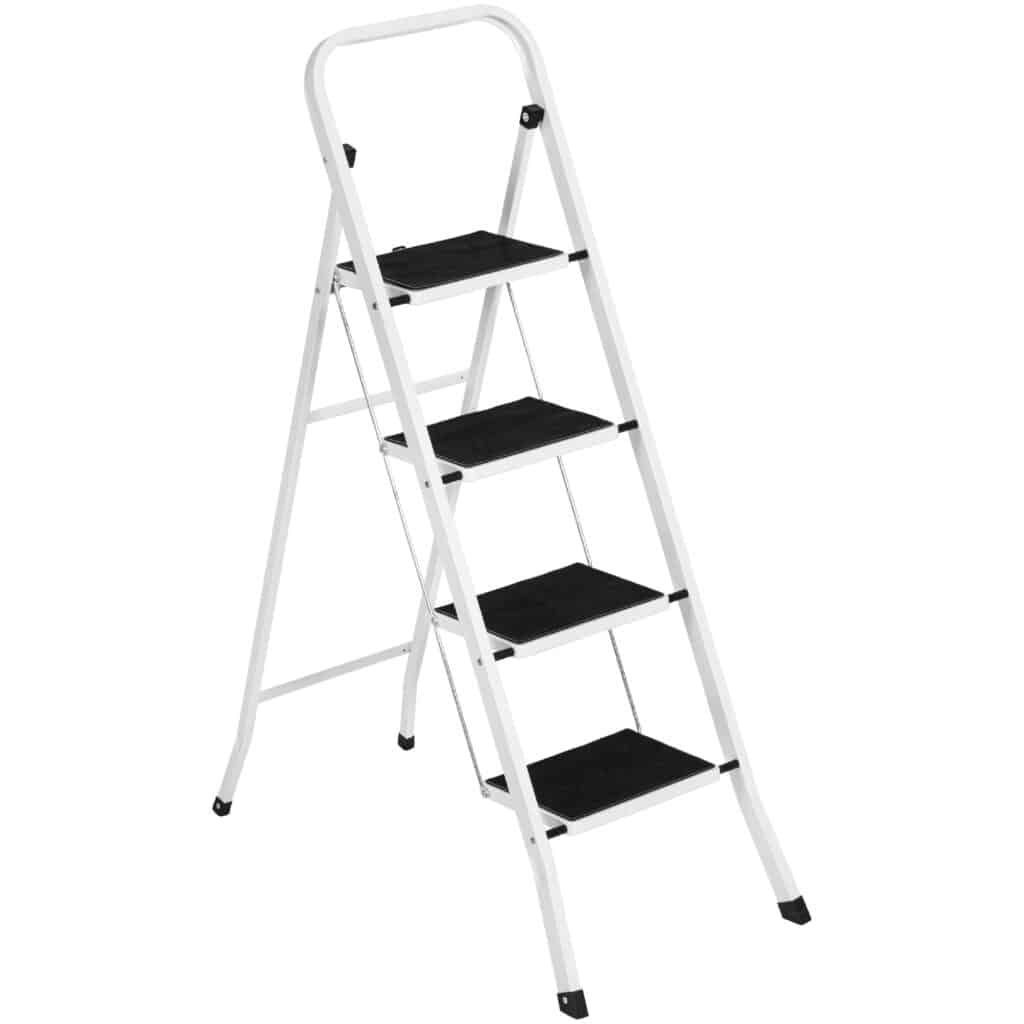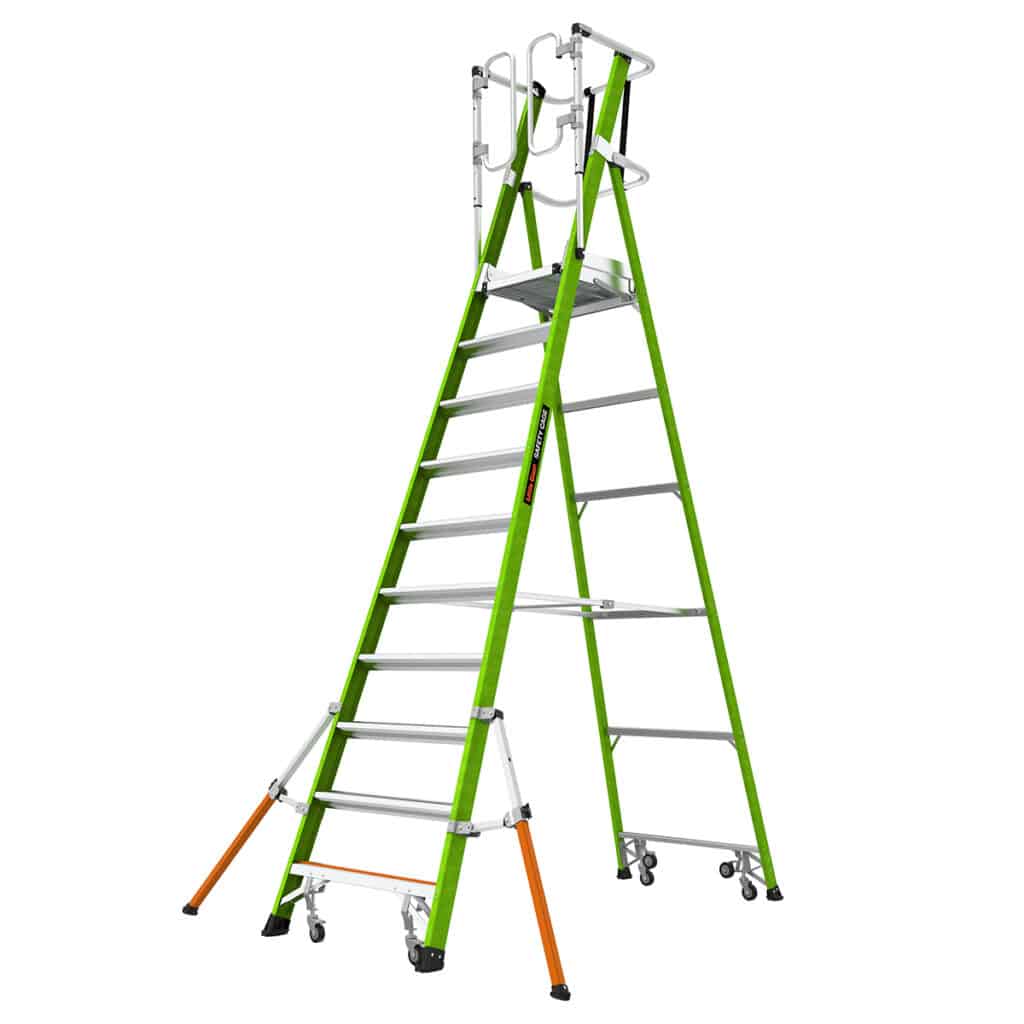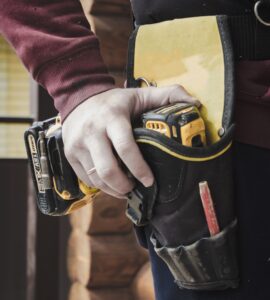There is always risk when using a ladder, on the jobsite we follow strict guidelines to ensure that all our guys are safe. As a homeowner, you are in charge of making sure you can do jobs around the house as safely as possible. Always read all the warning labels on your ladder, the labels should provide information vital to your specific ladder. This guide should help you stay safe while completing home maintenance projects.
Choose the right ladder for the job
Ladder height
The height of where you’ll be working should give a good guide to what height ladder you’ll need. Best practice is to be able to look down at or be eye level with your project, it is not safe to try to work above your head or beyond your arm’s reach. If you need to climb onto your roof the ladder should extend four rungs past your roofline to make climbing up and down easier, these rungs aid in getting onto your roof, but more importantly, they make getting down from your roof easier.
Ladder Material
Nowadays ladders are typically made out of fiberglass or aluminum. Having a fiberglass ladder is only necessary if you will be working on any electrical projects, or are working near powerlines. We do not recommend working near powerlines, if your project brings you close to powerlines consider calling in a professional. Fiberglass ladders are heavier than aluminum ladders, this makes them harder to transport and place.
If you have an old wooden ladder around the house you should consider upgrading it, wooden ladders tend to be older and can lose their strength over time or even rot. If you work with a wooden ladder, check each rung for stability on the ground each time you use it.
Types of Ladders
Step ladders are most commonly used for indoor small projects, light changing light bulbs. Most outdoor projects require more height. If you are using a step ladder outdoors, be sure that the step ladder was stored indoors, if it is an indoor step ladder.

Folding Ladders are a good stable solution for outdoor home maintenance projects around one story. Projects two stories or higher tend to need a longer ladder. Most folding ladders are not made to support weight on the top cap, be sure to read any warnings on the ladder for the safest practices.
Extension Ladders are most typically used when working with gutters or at the roof line, the height is adjustable for the safest height for your working area. Extension ladders need to be leaned against a solid surface for support. You can purchase a ladder stabilizer that attaches to your extension ladder, this allows for the ladder to be supported on a roof or against your house.
Before you climb up the ladder
Check over your ladder for any dents or spots that could impact the stability of the ladder. If you store your ladder outdoors, inspect for any rust or other weather related damage. It is best to store your ladder in a protected place like a garage, shed, or basement.
Put any tools you’ll need in a toolbelt, never climb a ladder with tools in your hands.
Proper Ladder placement
Find a good place to put the ladder, any surface you place the ladder on should be sturdy and free of debris, including leaves or gravel. Same goes with the top if using an extension ladder, never lean the top of the ladder on a window or lose/damaged gutters. Any instability you feel in the ladder when on the ground is going to increase tenfold when you’re at the top of the ladder.
Extension ladders need to be at 75 degree angle or follow the 4 to 1 rule, for every four feet in height the bottom of the ladder needs to be 1 foot away from the wall. Straying from this is very dangerous.
When using a folding ladder, place the ladder parallel to your working space so you climb the ladder next to where you need to be, get the ladder as close as possible to where you’ll be working.

Ladder Safety tips
We recommend having someone assist you with holding the ladder or spotting you for extra safety. Working with a partner is much safer than working alone. When climbing up and down a ladder be sure to follow the three points of contact rule, always have one foot and two hands or two feet and one hand on the ladder at all times.
If your project is in a larger area than you can reach in one spot, like when cleaning gutters, or hanging holiday lights, move the ladder often. It may take more time to move the ladder along your project but it could prevent a fall.
Do not work on a ladder if there is frost on the ground, or if it is raining, both these conditions cause ladders to be slippery.





